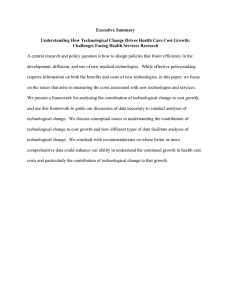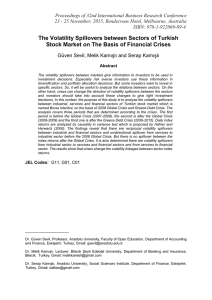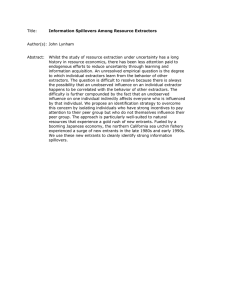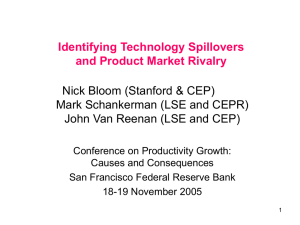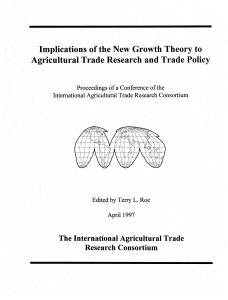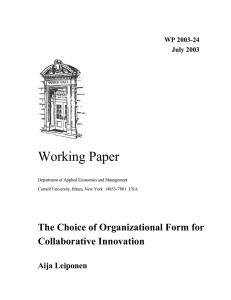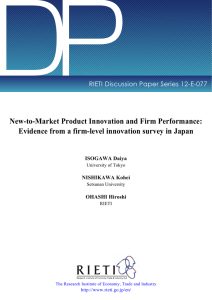Learning curves for energy technologies: Toward sound policy analysis and design
advertisement
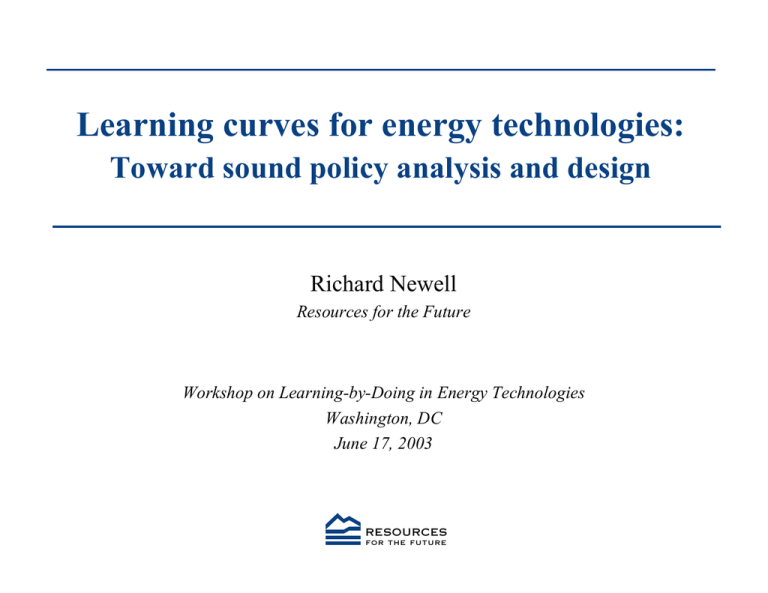
Learning curves for energy technologies: Toward sound policy analysis and design Richard Newell Resources for the Future Workshop on Learning-by-Doing in Energy Technologies Washington, DC June 17, 2003 What do learning curves represent? • Relationship between a product’s cost (price) and the “knowledge stock” associated with its production, typically measured by cumulative output • Reduced form of a very complex process of technological change, including the following forces − Labor-based learning − Returns from R&D investments − Economies of scale − Technological improvements (e.g., in capital equipment and materials) occurring over time, independent of production 2 What is the cost of learning? • Direct costs (investment costs) of producing at a loss in the short run to lower future production costs − difficult to predict in advance and very sensitive to assumed learning rate • Opportunity cost of not learning in areas that receive less investment due to the shifting of resources − depends on relative rate of learning (and learning spillovers) in the competing technologies 3 Will the private market get it right? • If environmental policy does not fully “price” the environment, there will be under-production of green energy, and suboptimal learning • If firms cannot capture an adequate return on learning investments (due to spillovers or competition) then firms may underinvest in learning • Key questions therefore include: − What is the assumed environmental policy? − What is the rate of learning and learning spillovers? − How do we avoid devolving to arguments for subsidizing all technology? 4 Learning curve empirics • LCs are a pervasive reduced-form phenomena • Convenient and simple, but masks important underlying dynamics • Difficult to forecast learning rates for new technologies (and the rate is endogenous to policy and management decisions) • Important to control for other forces, including R&D, scale economies, exogenous technological change, capital investment, global production, quality of output, demand responses 5 Sound policy analysis • Do not assume learning only occurs in green technologies; fossil competition is a moving target • Do not ignore the opportunity costs of learning • Avoid double counting technological change through inclusion of both learning effects and other sources • Hard to conclude anything about the value of technology production subsidies without comparing the learning costs to the benefits (avoided environmental harm) 6 Sound policy design • Best place to start is by fully pricing environmental externalities − clarifies policy question considerably, because it minimizes the difference between green energy and other technologies • If a technology subsidy approach is to be used… − is it flexible with regard to targets and technologies? − is there a clear exit strategy if the technology becomes competitive on its own, or looks like it may always be expensive? 7 Bottom line • Learning curves may be useful reduced-form tools for summarizing past technology cost paths • But at this point they have limited ability to predict the full costs and effectiveness of policies • Further research is needed to: − disentangle forces associated with cost reduction − estimate relative learning rates and spillovers for competing technologies − develop conceptual and empirical approaches for incorporating learning into aggregate (CGE) models − and thus support the design of smart policies 8

